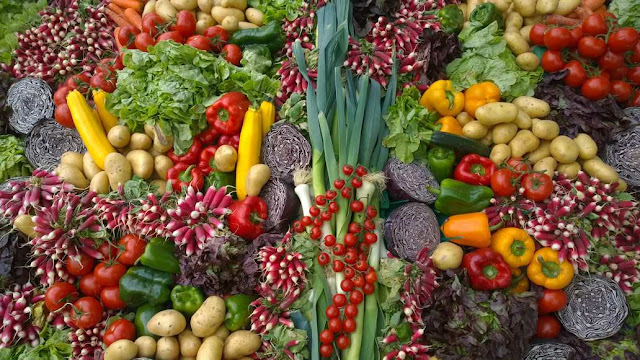Featured
- Get link
- X
- Other Apps
HIGH FIBER FOODS - AN OVERVIEW
There are many good reasons to bring high fiber foods to the table in abundance: they keep you slim, protect against disease, and can even extend your life. Even so, most people don't eat enough of it. Read here what you need to know about high-fiber foods, how you cover your daily requirement and whether supplements are useful.
High fiber foods: this is why they are important!
According to the German Nutrition Society (DGE), adults
should consume 30 grams of total dietary fiber, i.e. soluble (in fruit and
vegetables) and insoluble (cereals and legumes), in order to benefit from their
health-promoting effects.
Dietary fiber has a major impact on digestion. Eating too
few high-fiber foods often leads to constipation. They also help prevent
various diseases such as colon cancer, heart attack or obesity.

You can learn more about fiber here .
However, with an average of just 22 grams of fiber per day,
Germans are well below this recommendation. The reason: there is too much meat,
eggs, cheese, milk, pasta and potatoes on their menu.
On the other hand, grains, legumes, nuts, fruits and
vegetables would be rich in fiber. So in order to get more from the health
boosters, pack food of plant origin on your plate more often ; cereal products
in particular are real fiber bombs: three to four slices of wholemeal bread,
for example, already cover half the daily requirement.
These foods are high in fiber
A food is considered high in fiber if it has at least five
grams of fiber per 100 grams. In order to eat high in fiber, however, you do
not have to lead a culinary shadowy existence with crushed fresh-grain
porridge, brown rice or gray whole-wheat pasta. Just pay more attention to the
ingredients of (supposedly) high-fiber foods: Whole wheat flour, for example,
should come first when it comes to cereal products.
The term “whole grain” or “whole grain” is also a good
guide. Compared to wheat flour, rye flour contains almost twice the amount of
fiber. If you bake yourself, you simply replace half of the white flour with
wholemeal flour, for example, and have already increased your dietary fiber
quota considerably.
In addition to grain products, fruits and vegetables are
also good sources of fiber. Since they also contain a lot of water , this fresh
food is twice as healthy. With a muesli with nuts and fruits you start the day
with a good fiber base.
The following table gives you an insight into how you can
supplement your diet with high-fiber foods to increase your daily ration.
High fiber foods: how to meet your needs
In order to achieve the recommended 30 grams of
carbohydrates per day, it is important to carefully choose foods that are rich
in fiber. For example, the DGE suggests the following "menu of the
day":
• 3 slices
of whole grain bread
• 1 serving
of fruit muesli
• 2 to 3
medium-sized potatoes
• 2
medium-sized carrots
• 2
kohlrabi
• 1 apple
• 1 serving
of red fruit jelly
High-fiber diet: are supplements necessary and useful?
There are some dietary fiber supplements to buy, for example
agar agar, pectin , wheat bran or guar gum . They are mostly available as a
powder that you can dissolve in water and drink. But there are also ready-mixed
drinks, tablets or granules.
Dietary fiber supplements are used, for example, in cases of
constipation and / or when foods rich in fiber cannot be tolerated.
Nevertheless, they are not a complete substitute for
high-fiber food, since the fiber is isolated in preparations and the nutrients
that the high-fiber food also provides are not available. In addition, such
preparations are often expensive.
So if you want to take in more fiber and do not suffer from
any intolerance, it is better to do so through appropriate fiber-rich foods,
i.e. through fruit, vegetables and whole grain products.
Eat high in fiber - drink enough
If you are on a high-fiber diet, don't forget to drink
enough drinks, especially if you are new to high-fiber foods.
If you have rarely had whole grain bread, legumes and salad
on your plate so far, your body should get used to it slowly. Because many of
the indigestible component in the colon are broken down by bacteria. This
creates gases that often lead to unpleasant gas and bloating.
So don't increases the amount of fiber too sudden, chew
thoroughly and drink a lot to prevent these initial digestive problems from
high-fiber foods.
- Get link
- X
- Other Apps
